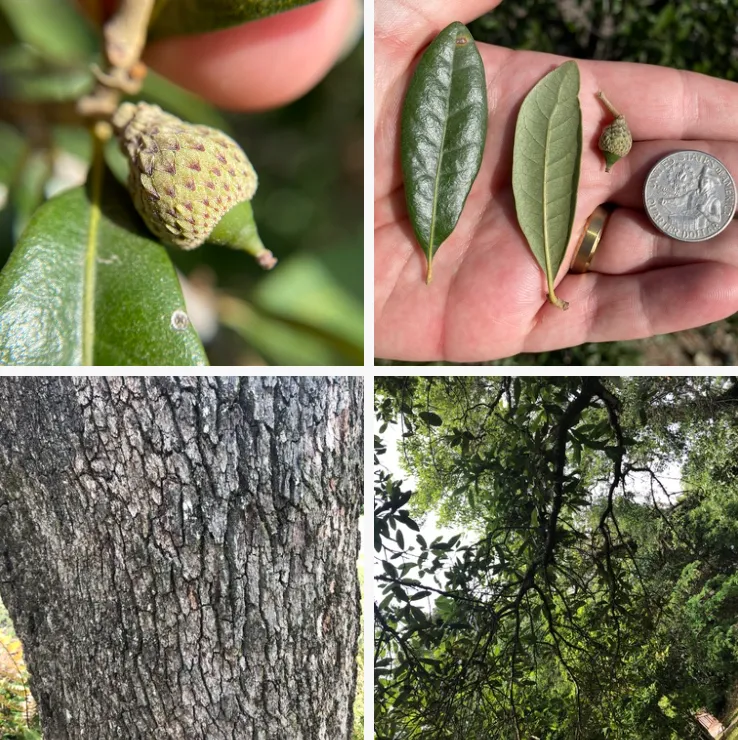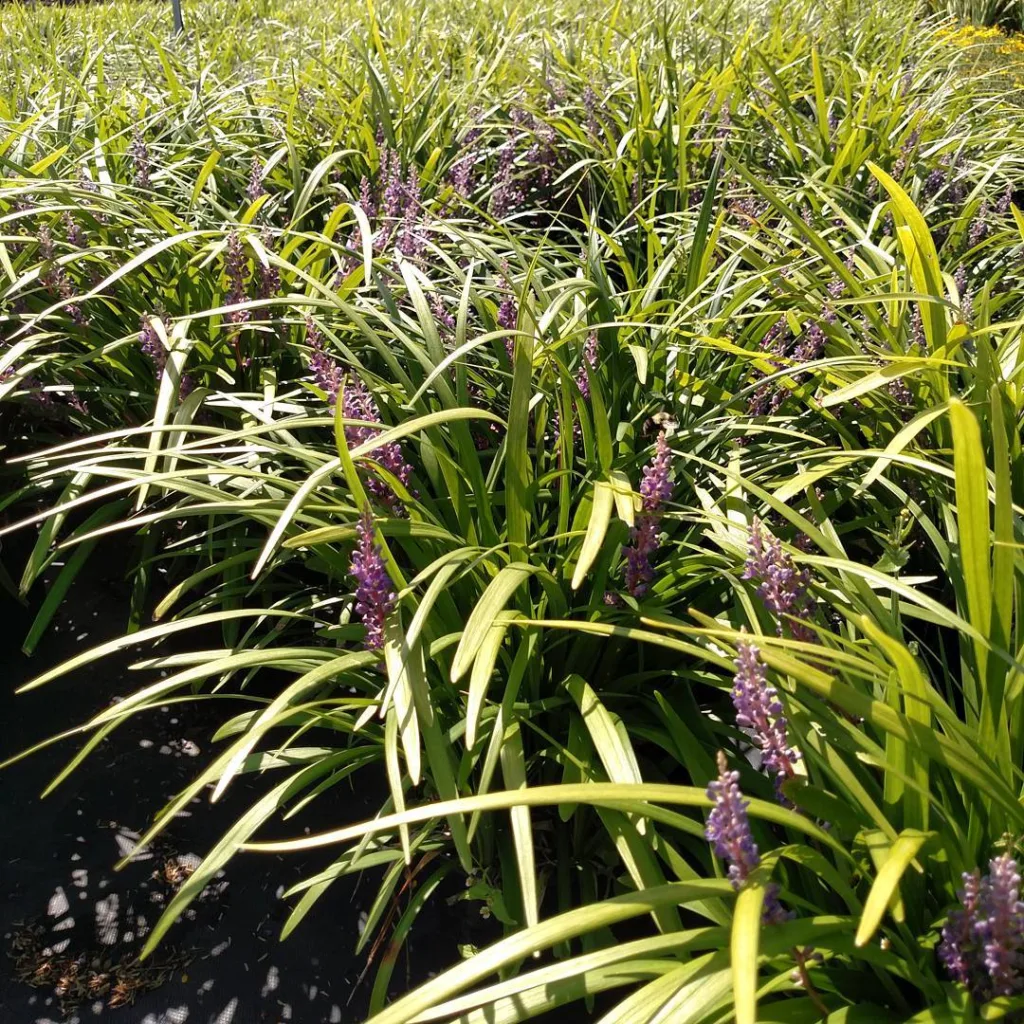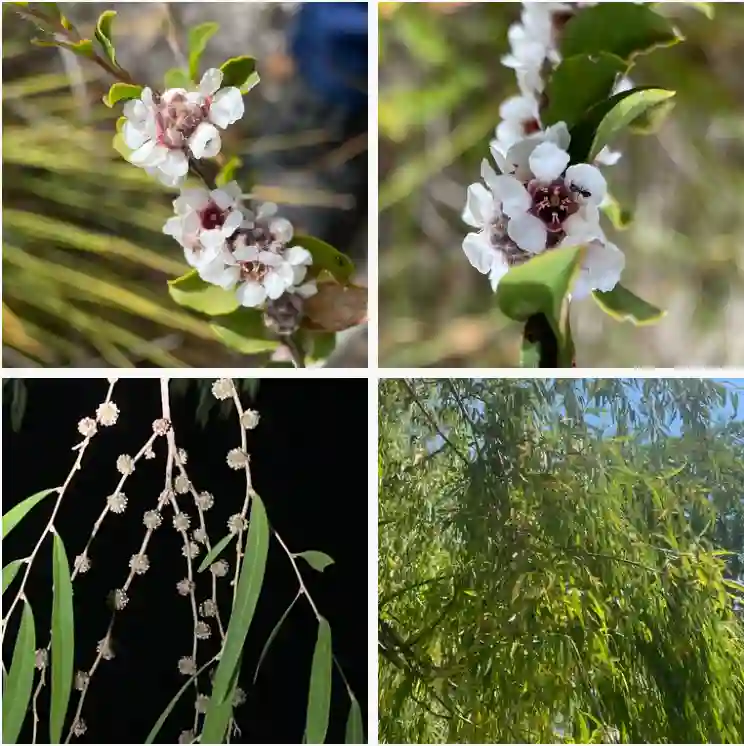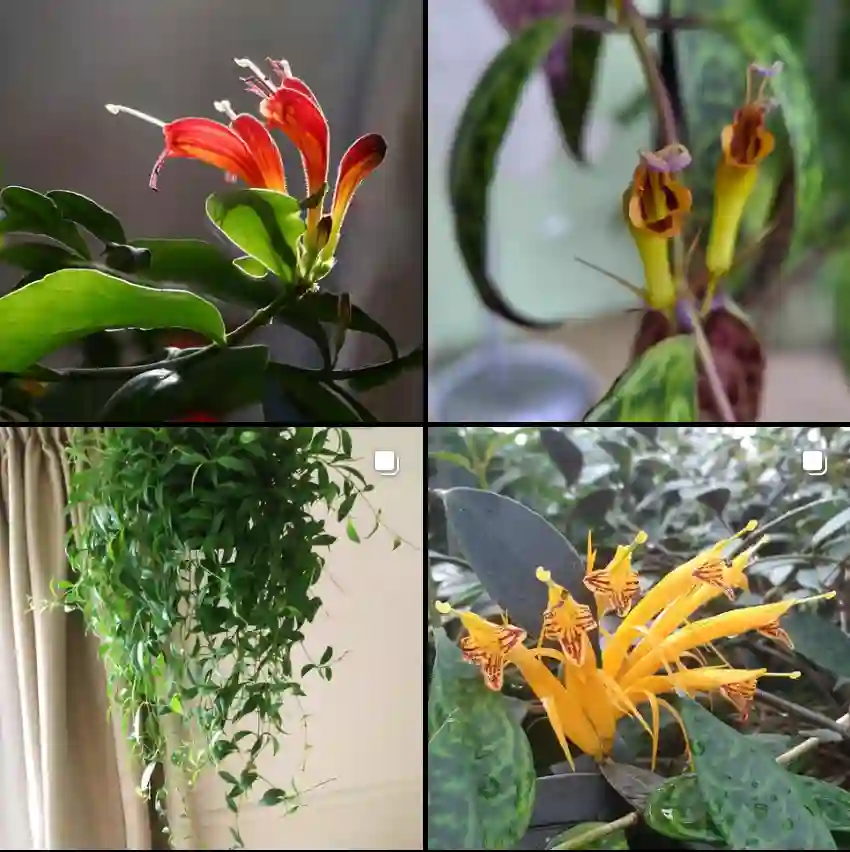The world of houseplants is vast and varied, but few genera capture the imagination quite like the Marantaceae family, often affectionately known as the “Prayer Plants.” Among its most captivating members is the Goeppertia bachemiana, a plant formerly classified under the Calathea genus, and still widely known by its previous name, Calathea bachemiana. This Brazilian beauty, with its striking foliage and elegant demeanor, has become a cherished addition to indoor plant collections worldwide. Its deep green leaves, adorned with intricate silvery-green patterns and often boasting a rich purple underside, are a testament to nature’s artistry.
Beyond its undeniable aesthetic appeal, the Goeppertia bachemiana offers a unique journey for the plant enthusiast. It’s a plant that rewards attentive care with vibrant growth and a dynamic presence, as its leaves subtly adjust throughout the day in response to light. For those willing to delve into its specific needs, the rewards are immense. This comprehensive guide will explore every facet of caring for Goeppertia bachemiana, from its botanical origins to advanced troubleshooting, and will culminate in a personal “time lapse” account of nurturing this magnificent plant from a humble beginning to a flourishing specimen over three years.
Goeppertia Bachemiana: A Botanical Profile
Before diving into the intricacies of its care, understanding the botanical background of Goeppertia bachemiana provides valuable context.
Scientific Name: Goeppertia bachemiana Common Names: Calathea Bachemiana, Zebra Plant (though this name is also used for Calathea zebrina), Prayer Plant (often broadly applied to the Marantaceae family). Family: Marantaceae (the arrowroot family) Origin: Native to the tropical rainforests of southeastern Brazil, where it thrives as an understory plant, sheltered by the dense canopy above. This natural habitat provides crucial clues to its preferred indoor conditions.
Physical Characteristics:
- Growth Habit: Goeppertia bachemiana is an evergreen perennial that grows in an upright, clumping, and bushy rosette formation. It typically reaches a height and width of up to 2 feet (approximately 60 cm) indoors, making it a manageable size for most living spaces.
- Foliage: The leaves are undoubtedly the star of the show. They are thick, leathery, and range in shape from ovate to lance-shaped. The upper surface displays a mesmerizing pattern of deep green, often with prominent silvery-green veins and streaks that resemble brushstrokes. The undersides of the leaves are frequently a rich purple or maroon, adding another layer of visual interest, especially when the leaves move.
- Flowers: While Goeppertia bachemiana is primarily grown for its stunning foliage, it can produce small, insignificant flowers under ideal conditions, though this is a rare occurrence for houseplants.
- Rhizomes: Like many plants in the Marantaceae family, it grows from rhizomes, which are underground stems that store nutrients and allow for easy division and propagation.
Reclassification Note: It’s important to note the botanical reclassification. What was once widely known as Calathea bachemiana has been reclassified into the Goeppertia genus. This change reflects a more accurate understanding of plant relationships based on genetic research. However, in horticultural circles, the common name “Calathea bachemiana” remains prevalent, and many plant enthusiasts still refer to it as such. Both names refer to the same beautiful plant.
The Art of Care: Nurturing Your Goeppertia Bachemiana
Caring for Goeppertia bachemiana can be a rewarding experience, but it requires attention to detail, as these plants can be quite particular about their environment. Replicating their native tropical rainforest conditions is key to their success.
Light Requirements
Goeppertia bachemiana thrives in bright, indirect light. In its natural habitat, it grows on the forest floor, receiving dappled sunlight filtered through the dense canopy.
- Ideal Placement: An east-facing window is often perfect, providing gentle morning sun. A north-facing window can also work, offering consistent indirect light. If placing it near a south or west-facing window, ensure it’s set back from the window or shielded by a sheer curtain to prevent direct sun exposure.
- Avoiding Direct Sun: Direct sunlight is the enemy of Goeppertia bachemiana‘s delicate foliage. It can scorch the leaves, leading to unsightly brown patches, and cause the vibrant patterns to fade, diminishing its characteristic beauty.
- Signs of Incorrect Light:
- Too Much Light: Fading leaf color, scorched or crispy brown spots on leaves.
- Too Little Light: Slowed growth, smaller leaves, less vibrant patterns, and elongated stems as the plant stretches for light.
Watering Wisdom
Consistent moisture is paramount for Goeppertia bachemiana, but equally important is avoiding waterlogging, which can lead to root rot.
- Frequency: The soil should be kept consistently moist, but not soggy. Allow the top 1 inch (2.5 cm) of soil to dry out slightly before watering again. This typically translates to watering every 5-7 days, but it can vary based on humidity, temperature, and pot size. Always check the soil moisture with your finger before watering.
- Type of Water: This is a critical factor often overlooked. Goeppertia bachemiana is highly sensitive to chemicals found in tap water, particularly fluoride and chlorine. These can accumulate in the soil and cause brown tips and edges on the leaves.
- Best Options: Distilled water, rainwater, or filtered tap water (left out overnight to allow chlorine to dissipate) are highly recommended.
- Watering Technique: Water thoroughly until water drains from the bottom of the pot. Discard any excess water from the saucer to prevent the plant from sitting in standing water.
- Signs of Incorrect Watering:
- Under-watering: Leaves curling inwards (a defense mechanism to conserve moisture), drooping, crispy edges, and overall wilting.
- Over-watering: Yellowing leaves, mushy stems, a foul odor from the soil, and ultimately, root rot.
Humidity is Key
High humidity levels are non-negotiable for Goeppertia bachemiana. Hailing from the humid understory of Brazilian rainforests, it thrives in environments with at least 60% humidity.
- Signs of Low Humidity: Brown, crispy leaf edges and tips are the most common indicators. Leaves may also curl or become distorted.
- Methods to Increase Humidity:
- Humidifier: The most effective way to maintain consistent high humidity, especially in dry climates or during winter heating.
- Pebble Tray: Place the pot on a tray filled with pebbles and water. Ensure the bottom of the pot does not sit directly in the water to avoid root rot; the evaporating water will increase local humidity.
- Grouping Plants: Plants release moisture through transpiration, so grouping several plants together can create a microclimate with higher humidity.
- Location: Placing the plant in a naturally humid room like a bathroom or kitchen can be beneficial, provided light conditions are met.
- Misting: While misting can provide a temporary boost, it’s not a long-term solution for humidity and can sometimes contribute to fungal issues if done improperly or without good air circulation. If you do mist, use distilled or filtered water and ensure good airflow.
Temperature Preferences
Maintain a consistent warm environment for your Goeppertia bachemiana.
- Ideal Range: Temperatures between 65°F and 80°F (18°C to 27°C) are ideal.
- Avoid Extremes: These plants are sensitive to sudden temperature fluctuations and cold drafts. Keep them away from open windows during cold weather, air conditioning vents, and heating radiators. A minimum temperature of 60°F (15°C) should be maintained.
Soil Mix Mastery
A well-draining, moisture-retentive, and airy potting mix is crucial for healthy root development and preventing root rot.
- Ideal Composition: A peat-based potting mix is a good starting point. Amend it with ingredients that improve drainage and aeration while still retaining some moisture.
- Components: A good mix might include:
- Peat moss or coco coir (for moisture retention)
- Perlite or coarse sand (for drainage and aeration)
- Orchid bark or charcoal (for aeration and preventing compaction)
- A small amount of worm castings or compost (for nutrients)
- Components: A good mix might include:
- pH Level: Goeppertia bachemiana prefers a slightly acidic soil pH, typically ranging from 5.5 to 6.5.
Feeding Your Plant
Fertilize during the active growing season to support its lush foliage.
- Frequency: During spring and summer (the growing season), fertilize every 2-4 weeks.
- Fertilizer Type: Use a diluted, balanced liquid houseplant fertilizer (e.g., 10-10-10 or similar). Dilute it to half or quarter strength to avoid over-fertilization, as these plants can be sensitive to excess nutrients.
- Dormancy: Reduce or stop fertilizing entirely during fall and winter when the plant’s growth naturally slows down.
Repotting Rituals
Goeppertia bachemiana generally prefers to be slightly root-bound, so frequent repotting isn’t necessary.
- When to Repot: Repot every 2-3 years, or when you notice signs of the plant being root-bound (roots circling the pot, water draining too quickly, slowed growth despite good care).
- Best Time: Spring, at the beginning of the growing season, is the ideal time for repotting.
- Pot Size: Choose a pot that is only one size larger (e.g., from a 6-inch to an 8-inch pot) with ample drainage holes.
- Process: Gently remove the plant, loosen any circling roots, and repot with fresh, appropriate potting mix. Water thoroughly after repotting.
Pruning and Cleaning
- Pruning: Remove any yellow, brown, or damaged leaves by trimming them at the base of the stem. This keeps the plant looking tidy and encourages the plant to put energy into new, healthy growth.
- Cleaning: Regularly wipe down the leaves with a soft, damp cloth (using distilled water) to remove dust. Dust can impede the plant’s ability to photosynthesize and breathe. This also provides an opportunity to inspect for pests.
Propagation: Expanding Your Goeppertia Bachemiana Collection
The most reliable and recommended method for propagating Goeppertia bachemiana is through division. This is best done during repotting when the plant is already out of its pot.
- Timing: Late spring, when the plant is actively growing, is the best time.
- Steps for Division:
- Prepare: Gather clean, sharp scissors or a knife, new pots, and fresh potting mix. Sterilize tools to prevent disease.
- Remove Plant: Carefully take the mother plant out of its pot. Gently loosen the soil around the root ball.
- Identify Divisions: Look for natural clumps or sections of the plant that have their own root system and at least a few leaves.
- Divide: Gently pull apart the clumps. If necessary, use your sterilized knife or scissors to cut through the rhizomes, ensuring each new division has a healthy portion of roots and foliage.
- Pot Up: Plant each division into its own pot filled with fresh, well-draining potting mix. Ensure the plant sits at the same depth as it was in the original pot.
- Water and Care: Water the newly potted divisions thoroughly. Place them in a warm, humid spot with indirect light, mimicking the parent plant’s ideal conditions.
- Boost Humidity (Optional but Recommended): To provide extra humidity for the newly stressed divisions, you can cover each pot with a clear plastic bag or dome to create a mini-greenhouse effect. Remember to open the bag daily for fresh air to prevent fungal issues.
- Patience is Key: It may take a few weeks for the new divisions to establish and show signs of new growth. Avoid other propagation methods like stem cuttings or air layering, as they are generally unsuccessful for Goeppertia bachemiana.
Troubleshooting Common Challenges: Keeping Your Plant Happy
Even with the best care, Goeppertia bachemiana can sometimes present challenges. Understanding the common issues and their solutions will help you keep your plant thriving.
- Brown Leaf Edges/Tips:
- Cause: Most commonly, low humidity or sensitivity to chemicals (fluoride, chlorine) in tap water. Under-watering can also contribute.
- Solution: Increase humidity (humidifier, pebble tray), use distilled/rainwater/filtered water, ensure consistent watering.
- Curling/Drooping Leaves:
- Cause: Primarily under-watering or very low humidity. The plant curls its leaves to conserve moisture.
- Solution: Check soil moisture and water if dry. Increase ambient humidity.
- Fading Leaf Color:
- Cause: Insufficient light. The vibrant patterns can become dull.
- Solution: Move the plant to a brighter spot with indirect light.
- Yellowing Leaves/Mushy Stems (Root Rot):
- Cause: Overwatering and poor drainage. Roots suffocate and rot in soggy soil.
- Solution: Reduce watering frequency, ensure the pot has excellent drainage, and use a well-draining soil mix. If root rot is severe, repot the plant, trimming away any mushy, brown roots before replanting in fresh soil.
- Leaf Spot:
- Cause: Fungal or bacterial infections, often exacerbated by water sitting on leaves or poor air circulation.
- Solution: Avoid wetting the foliage when watering. Improve air circulation around the plant. Remove affected leaves. In severe cases, a fungicide may be necessary.
- Pest Management:
- Goeppertia bachemiana can be susceptible to common houseplant pests. Regular inspection is key to early detection.
- Spider Mites: Tiny pests that create fine webbing, especially on the undersides of leaves. Leaves may show tiny yellow or brown stippling.
- Solution: Isolate the plant. Increase humidity. Spray with a strong jet of water (especially undersides). Apply neem oil or insecticidal soap.
- Mealybugs: Appear as white, cottony masses in leaf axils and on stems. They suck sap, leading to stunted growth.
- Solution: Dab directly with a cotton swab dipped in rubbing alcohol. Use insecticidal soap or neem oil.
- Fungus Gnats: Small, black, mosquito-like flies that hover around the soil surface. Their larvae feed on roots in overly moist soil.
- Solution: Allow the top layer of soil to dry out between waterings. Use sticky traps for adults. Beneficial nematodes or specific soil drenches can target larvae.
- Aphids and Scale: Less common but can occur. Treat similarly with insecticidal soap or by physically removing them.
Goeppertia Bachemiana in the Home: Unique Qualities and Benefits
Beyond its captivating beauty, Goeppertia bachemiana offers several benefits that make it a valuable addition to any indoor environment.
- Air Purification: Like many houseplants, Goeppertia bachemiana contributes to improved indoor air quality. It can help filter common household toxins such as benzene and formaldehyde, making your living space healthier.
- Humidity Regulation: As a plant that thrives in high humidity, it naturally releases moisture into the air through transpiration. This can help increase ambient humidity, which is particularly beneficial in dry indoor environments, especially during winter months when heating systems can significantly lower humidity levels. Increased humidity can alleviate dry skin and respiratory discomfort.
- Aesthetic Appeal and Stress Reduction: The intricate patterns and vibrant colors of its foliage are inherently calming and visually appealing. The presence of living greenery has been shown to reduce stress, improve mood, and enhance overall well-being.
- Pet-Friendly: A significant advantage for many plant owners, Goeppertia bachemiana is considered non-toxic to both cats and dogs, making it a safer choice for households with furry friends. (Note: While non-toxic, the sap can cause mild skin irritation in sensitive individuals, so handling with gloves is advisable if you have sensitive skin.)
- Relative Hardiness: Compared to some of its more notoriously “fussy” Calathea cousins, Goeppertia bachemiana is often considered one of the hardier species. Its slightly thicker, leathery leaves provide a bit more resilience, and it can tolerate slightly lower temperatures and more shaded conditions than some other Marantaceae.
Goeppertia Bachemiana vs. Its Cousins: A Comparative Look
The world of Marantaceae is rich with diverse foliage, and Goeppertia bachemiana stands out with its unique characteristics. Here’s how it compares to some other popular members of its family:
Goeppertia Bachemiana vs. Calathea Orbifolia
The original article mentioned a comparison with Calathea orbifolia, and it’s a good one, as both are popular for their striking foliage.
- Leaf Appearance:
- Goeppertia bachemiana: Features elongated, ovate to lance-shaped leaves with deep green bases and distinctive silvery-green veins and streaks, often with a purple underside. The texture is thicker and leathery.
- Calathea orbifolia: Known for its large, almost perfectly round leaves with prominent, symmetrical silver-green stripes against a lighter green background. Its leaves are generally thinner and more delicate than bachemiana.
- Size: Calathea orbifolia tends to grow larger and wider, with leaves that can reach impressive sizes, making it a more dramatic statement plant. Goeppertia bachemiana remains more compact.
- Light Tolerance: While both prefer indirect light, Goeppertia bachemiana is generally more tolerant of slightly lower light conditions and is considered somewhat hardier than the often more demanding Calathea orbifolia.
- Overall Vibe: Bachemiana offers an elegant, intricate pattern, while orbifolia provides a bold, graphic statement.
Goeppertia (formerly Calathea) vs. Maranta (True Prayer Plants)
It’s common for all plants in the Marantaceae family to be broadly called “Prayer Plants” due to their characteristic leaf movement (nyctinasty). However, there’s a distinction between the Goeppertia (and Calathea) genus and the Maranta genus.
- Nyctinasty (Leaf Movement):
- Maranta (e.g., Maranta leuconeura ‘Red Vein’): Exhibits very pronounced nyctinasty. Its leaves dramatically fold upwards at night, resembling hands in prayer, and lower again during the day to maximize light absorption. This movement is quite noticeable.
- Goeppertia/Calathea (including bachemiana): While Goeppertia bachemiana and other Goeppertia/Calathea species do exhibit nyctinasty (their leaves adjust their angle in response to light, often rising slightly at night), the movement is typically much more subtle and less dramatic than that of a Maranta. They don’t usually fold up as tightly or as noticeably.
- Growth Habit:
- Maranta: Tends to have a more trailing or spreading growth habit, making them excellent choices for hanging baskets or shelves where their foliage can cascade.
- Goeppertia/Calathea: Generally grow in a more upright, bushy, or clumping rosette form, as seen with Goeppertia bachemiana.
Understanding these distinctions helps appreciate the unique qualities of each plant within this fascinating family.
From Seedling to Splendor: My Calathea Bachemiana’s 3-Year Time Lapse Transformation
My journey with Goeppertia bachemiana began not with a seed, but with a small, unassuming plant purchased from a local nursery. It was a humble specimen, perhaps six inches tall, with just a few nascent leaves showcasing the promise of its future splendor. I remember being drawn to the subtle shimmer of its silvery veins against the deep green, a pattern that seemed to whisper tales of its rainforest home. This is the story of its three-year transformation, told from my perspective as its devoted gardener.
Year 1: The Tender Beginnings – Learning the Language of Leaves
When I first brought my Goeppertia bachemiana home, it was a delicate creature. I placed it in an east-facing window, ensuring it received plenty of bright, indirect light. My initial challenge, as with many new plant parents, was mastering its watering needs. I quickly learned that “consistently moist” didn’t mean “constantly soggy.” The first few weeks were a dance of checking the top inch of soil, waiting for that slight dryness, and then watering with filtered water. I soon noticed the tell-tale signs of my learning curve: a few crispy brown tips. This immediately signaled low humidity and my use of unfiltered tap water in a moment of haste.
I invested in a small humidifier, placing it near my plant, and switched exclusively to distilled water. Within a month, the new growth appeared without the dreaded brown edges. It was a slow but steady process. The plant put out perhaps one new leaf every 3-4 weeks. Each unfurling leaf was a tiny victory, revealing its perfectly patterned surface, a miniature replica of the mature leaves I hoped for. By the end of the first year, my Goeppertia bachemiana had doubled in size, now a foot tall and equally wide, a compact, bushy specimen that hinted at the lushness to come. Its roots were just beginning to fill its 4-inch nursery pot, but it was clearly happy and acclimating.
Year 2: Maturation and Flourishing – The Rhythm of Growth
The second year marked a significant shift. My Goeppertia bachemiana had settled into its routine, and so had I. The humidifier ran almost constantly, and my watering schedule became second nature. The plant responded with a burst of growth. New leaves emerged more frequently, often two at a time, and noticeably larger than those from the first year. The thick, leathery texture of its mature leaves became more pronounced, and the silvery patterns seemed to gleam with newfound intensity.
Around the spring of its second year, I decided it was time for its first repotting. Gently easing it from its pot, I saw a healthy, robust root ball. I moved it into a 6-inch pot, using a custom mix of peat, perlite, and a touch of orchid bark to ensure excellent drainage and aeration. This repotting seemed to invigorate it further. The plant grew steadily, reaching about 18 inches in height and width by mid-year. I also started a consistent fertilization schedule during spring and summer, using a diluted liquid feed every three weeks. This seemed to fuel its impressive foliage production.
One minor setback occurred during a particularly dry spell in winter when I neglected the humidifier for a few days. A few lower leaves started to curl dramatically. It was a stark reminder of its humidity demands. A quick return to consistent humidity and a thorough watering brought the leaves back to their usual posture within a day or two, a testament to the plant’s resilience when issues are addressed promptly. By the end of year two, my Goeppertia bachemiana was a truly impressive specimen, a vibrant green focal point in my living room, its dense foliage a testament to consistent care.
Year 3: Peak Health and Beyond – The Joy of a Thriving Companion
Entering its third year, my Goeppertia bachemiana was magnificent. It stood proudly at its full mature height of nearly two feet, a dense, symmetrical rosette of stunning foliage. The leaves were uniformly large and healthy, their patterns crisp and vibrant. It had achieved that “splendor” I had envisioned when I first brought it home.
This year was less about overcoming challenges and more about enjoying the fruits of my labor. The plant continued its steady production of new leaves, maintaining its lush appearance. I continued the established care routine: consistent watering with distilled water, high humidity, bright indirect light, and regular feeding during the warmer months. I occasionally wiped down its broad leaves to keep them dust-free, which not only helped it photosynthesize but also allowed me to admire its intricate beauty up close.
I also noticed how its presence subtly influenced the atmosphere of the room. Its vibrant green brought a sense of calm, and its quiet, steady growth was a constant source of satisfaction. While it never flowered, its foliage was more than enough reward. This third year solidified my belief that while Goeppertia bachemiana demands attention, it gives back tenfold in beauty and the quiet satisfaction of nurturing a living work of art. It’s a plant that teaches patience, observation, and the profound joy of a successful gardener-plant relationship.
Conclusion
The Goeppertia bachemiana, or Calathea bachemiana as it’s still widely known, is a truly remarkable houseplant. Its intricate patterns, vibrant colors, and dynamic leaf movements make it a captivating addition to any indoor space. While it may have a reputation for being somewhat “fussy,” understanding and consistently meeting its specific needs for light, water, and especially humidity, will ensure its thriving health.
From its humble beginnings as a small plant to its full, lush maturity, the journey with a Goeppertia bachemiana is a rewarding time lapse of growth and learning. It’s a plant that not only beautifies your home but also contributes to a healthier indoor environment through its air-purifying and humidity-regulating qualities. With the detailed care guide and the insights from a three-year personal journey, you are well-equipped to embark on your own successful adventure with this magnificent botanical gem. Embrace the challenge, enjoy the process, and watch your Goeppertia bachemiana transform into a true spectacle of nature’s design.
If i die, water my plants!



